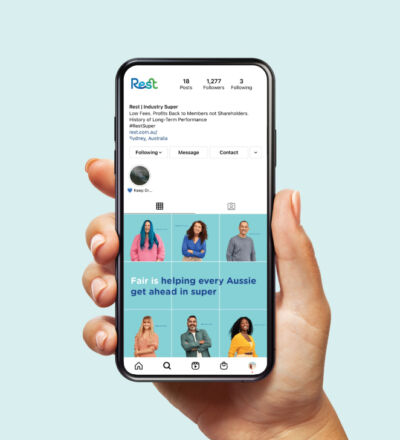Storytelling Through Your Brand
Does your brand tell a story?
Storytelling is one of the oldest and most effective ways to communicate. It’s how we connect, remember, and make sense of things. In branding, it’s how businesses become more familiar, more trusted, and more relatable.
At its heart, every strong brand story has a structure: your customer is the hero, your business is the guide, and your product or service is the thing that helps them get where they want to go. When the story’s clear, your message lands, and your audience knows exactly why you matter.
-
How businesses build a narrative
-
Establishing a narrative that's aligned with your vision and values
-
Understanding exactly who you're talking to
-
Our message in their language
-
Consistent storytelling builds familiarity
-
Creating recognisable trademarks of your brand
-
Partnering with talent to help build your story
How businesses build a narrative
Your brand narrative is the story people tell themselves about your business. It’s shaped by every interaction they have with you—from your product and website to customer service and social channels.
A strong brand narrative should:
- Build emotional connection
- Create familiarity and trust
- Clearly differentiate you from competitors
The most effective brands build their narrative by telling a consistent story across every channel—using classic storytelling devices like character, conflict, and resolution to make their message stick.
Establishing a narrative that's aligned with your vision and values
Start with your audience. Who are they? What do they care about? What do they need?
Once you’ve nailed that, you can begin crafting a story that connects. Good stories have structure—so start mapping yours from beginning to middle to end.
Say you’re a fashion brand:
- Beginning: You were founded on the belief that everyone deserves to feel confident in what they wear.
- Middle: You offer accessible, stylish clothing that reflects real people’s personalities.
- End: You make it easy to find clothes that feel right, look good, and fit with your customer’s life.
Once you have your story straight, the job is to bring it to life. Every customer touchpoint—website, socials, packaging, in-store—should reinforce the message. The tone, visuals, and overall feel should reflect that same consistent story.

We helped Rest with telling their story
Understanding exactly who you're talking to
So be real. That doesn’t mean oversharing or trying too hard, it just means speaking honestly and showing vulnerability when it counts.
Authenticity starts with knowing your audience. That means building detailed customer personas based on real data: Who are they? What do they care about? What are they struggling with? How do they speak?
The better you understand them, the easier it is to craft a story and shape visuals and messaging that truly resonates.
Our message in their language
To make a story land, you must speak your audience’s language.
What phrases do they use to describe their needs? What do they search for online? What are they saying on social? Do your homework: use keyword research, search data, and social listening tools to gather insight.
Then, mirror their language in your messaging. Keep it simple. Clear. Relatable. Avoid jargon, ditch the fluff, and say what you mean.
Consistent storytelling builds familiarity
Consistency doesn’t mean being repetitive, it means being recognisable. When your story shows up the same way across every touchpoint, it builds familiarity, reinforces trust, and strengthens your brand in the minds of your audience.
Start by defining your brand voice. That’s the personality your brand shows up with—in tone, style, and language. It should be recognisable whether someone’s reading a product description, a social caption, or a confirmation email.
Then make sure it’s applied across the board—website, socials, packaging, internal comms, everything. Use a brand style guide to keep everyone aligned and keep evolving it as your story grows.

We helped the NZRFU with creating an iconic brand
Creating recognisable trademarks of your brand
Think of Nike’s swoosh. Apple’s bitten apple. McDonald’s golden arches. These aren’t just design elements—they’re visual shorthand for an entire brand narrative. They carry meaning, stir emotion, and create instant recognition.
Great brand visuals aren’t just decorative, they’re functional. They’re the distillation of your story into something you can see, recall, and trust. A great logo or design element doesn’t just look good—it says something—which makes people feel something.
What’s your version? Whether it’s a colour palette, a custom font, or a motion style, it should feel unmistakably yours and show up consistently across every touchpoint.
Partnering with talent to help build your story
Some of the best brand stories are co-written.
The right partners—creators, influencers, storytellers—can help carry your narrative further, adding fresh perspective and reach without losing what makes it yours.
But it only works when there’s alignment. Their tone, values, and audience should feel like a natural fit. So do your homework. Understand their work, their world, and what they could bring to yours. Then be clear on what you need, what you’re offering, and where the collaboration can go.
Done right, these partnerships don’t just extend your story—they help it evolve, opening up new ways to connect with the people who matter most.


